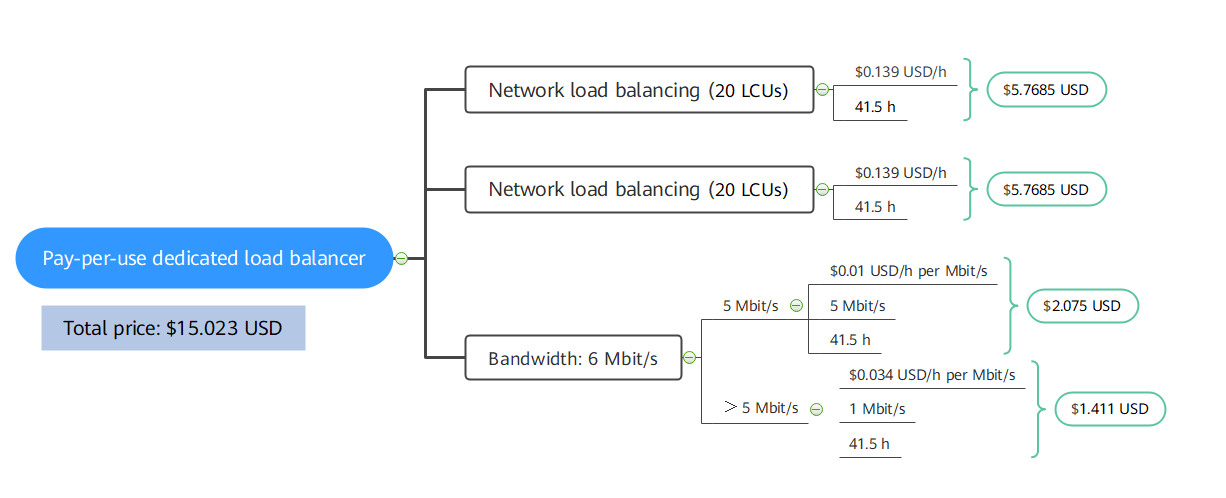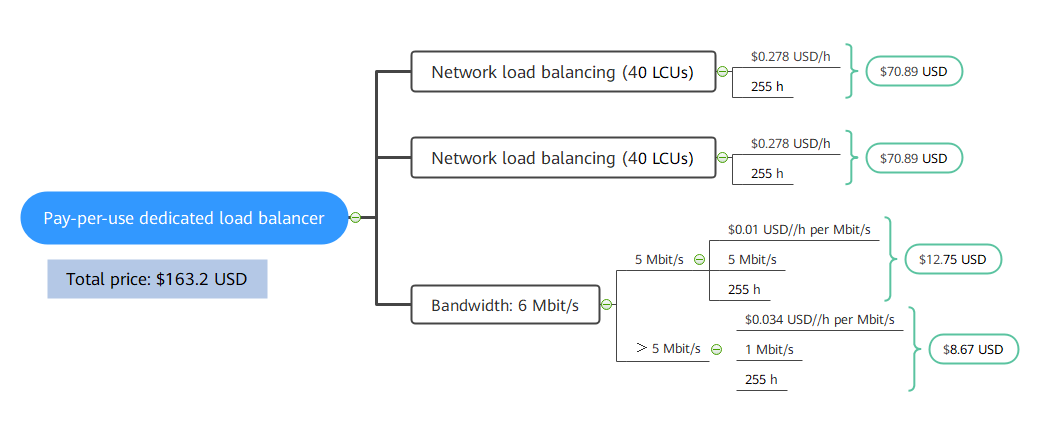Billing Examples
Billing Scenarios
Suppose you purchased a pay-per-use dedicated load balancer at 15:30:00 on April 18, 2023 and configure it as follows:
- AZ: 2 central AZs
- Specifications: fixed; application load balancing (small I) and network load balancing (small I)
- EIP: Auto assign
- EIP Type: Dynamic BGP
- Billed By: Bandwidth
- Bandwidth: 6 Mbit/s
After a period of time, you found that the current specifications no longer met your service requirements and upgraded the specifications to application load balancing (small II) and network load balancing (small II) at 09:00:00 on April 20, 2023. In this case, how much will the load balancer be billed in April?

If you bind an EIP to your load balancer, you will also be charged for the EIP and the bandwidth used by the EIP.
For details about EIP pricing, see Elastic IP Pricing Details.
Billing Analysis
In this example, you are billed by two usage periods: small I usage from April 18, 2023, 15:30:00 to April 20, 2023, 10:30:00, and small II usage from April 20, 2023, 10:30:00 to April 30, 2023, 23:59:59.
Pay-per-use billing
From April 18, 2023, 15:30:00 to April 20, 2023, 09:00:00, the small I load balancer was used for 41.5 hours, so the price would be calculated as shown in the following figure.

From April 20, 2023, 09:00:00 to April 30, 2023, 23:50:59, the small II load balancer was used for 255 hours, so the price is calculated as shown in the following figure.

The total price for this load balancer in April is $178.223 USD ($15.023 USD + $163.2 USD).
Feedback
Was this page helpful?
Provide feedbackThank you very much for your feedback. We will continue working to improve the documentation.See the reply and handling status in My Cloud VOC.
For any further questions, feel free to contact us through the chatbot.
Chatbot





